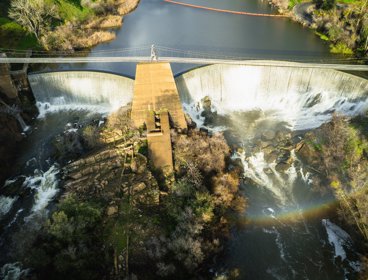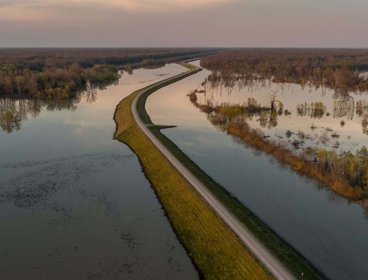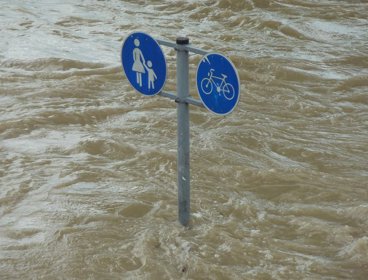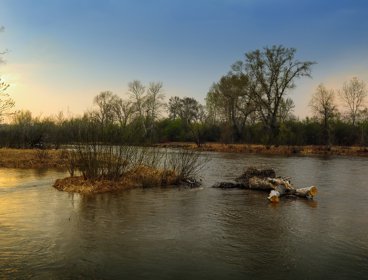Characterised by rising water levels, river and coastal flooding is fairly well understood. However, what about flooding that occurs far away from water courses, as a result of heavy and intense rainfall?
To find out more, we turned to Professor Alan Werritty, a physical geographer specialising in hydrology. His latest research assesses the number of people in urban areas that are at risk from ‘pluvial’ (rain-related) flooding, both now and in the future.
‘Pluvial flooding is effectively the "ponding" – or mass gathering – of water that cannot get drain quickly enough,’ he explains. ‘It is an invisible hazard – it pops up almost unexpectedly in places far removed from water courses.’
Pluvial flooding is currently a threat to two million people in UK urban areas. 1.2 million more people are expected to be put at risk of pluvial flooding by 2050 – 300,000 of which are expected to be due to climate change.
How has pluvial flooding come to be a threat to urban areas?
Pluvial flooding events are largely driven by isolated, intense and highly localised storms. Urban pluvial flooding in the UK is made worse by the poor state of the urban drainage system, which is over 100 years old. It has not necessarily been that well maintained and in some areas is in need of being replaced bit-by-bit.
Any urban drainage network should be able to withstand a 1-in-30 year storm. However, in reality, many of the UK’s urban drainage systems may only be able to cope with a 1-in-5 year storm.
Can we predict cases of urban pluvial flooding before they happen?
To predict the location and severity of localised rainfall is currently at the limits of the Met Office’s modeling ability. Storm cells may be less than one kilometer in diameter, which means that they do not clearly show up on weather radar systems.
However, even if you could accurately model such storm cells, the warning that you could issue to people in the affected areas would probably be only an hour or so in advance. The intensity and high-rate of rainfall makes predictive modeling of pluvial flooding highly problematic.
From existing weather models, is there any evidence of increased flooding under climate change?
It is fair to say that we are now experiencing relatively rare meteorological events more frequently. Those people modeling change are very hesitant to pin-point a single event as being indicative of climate change. What we are seeing is a pattern of events, which is entirely consistent with climate change model predictions.
You cannot put your finger on one event and say: ‘That proves climate change’. But you can take an aggregate of events and say: ‘This is consistent with the climate change models and it is wise to act accordingly’.
So whose responsibility is it to protect against and cope with increasing flood risks?
The public mentality has evolved to believe that people can live wherever they want and that national and local governments hold responsibility for recovering from flooding. But the responsibility for managing flood risk should come down to the owner of a given property.
Part of the problem is that, historically, the UK has permitted far too much building in high risk flood areas – partly due to population pressures – and we are dealing with the consequences of that at the moment. Ultimately, we cannot defend all of those places at risk from flooding – it is just too expensive.
People need to wake up to the fact that it is the property owners’ responsibility to mitigate against the risk of flooding. This requires a huge change in the public’s perception and understanding. We need to shift from defending places against flooding, to protecting people from getting flooded.
What can be done to adapt to future flood risks in the UK?
The traditional method of pouring large amounts of concrete to engineer defences against rising water levels is simply not sustainable – environmentally or financially. The cost of doing so simply does not provide a large enough benefit in a great number of cases.
But structural defences can be financially viable. Just think about the implications of damage to vulnerable infrastructure, such as water treatment plants and electricity sub-stations. The costs of flood damage to these would have far-reaching consequences.
But when it is not financially possible to defend places against flooding – because the costs outweigh the benefits – we need to come up with a plan B. For example, the government can play a role by providing much better warnings, advising on ways to reduce domestic flood damages and providing highly efficient emergency services.
How can you decide whether a flood defence is financially viable?
Flood risk managers currently require engineers to design flood defences that will protect against floods of a certain level – say a 1-in-200 year flood. From this given level of flood protection, the flood risk managers can compare the costs and benefits of that structure.
You need to exceed a cost-benefit ratio of 1:1 for a defence to be economically viable. However, with the tightening of the public purse strings in the UK at the moment, you are often looking at a ratio of 1:6 (cost:benefit) before you get anything funded.
Typically the Environment Agency has had a list of areas that need protecting. Each area is ranked in order of priority and a line is drawn somewhere down that list according to how much money is available. So a lot of areas that are worthy of flood defences will not receive flood defence structures.
Is flood management largely to do with economic factors, then?
For too long, the cost-benefit analysis approach has been entirely in the hands of the economists. Until now, the social costs and environmental impacts of flooding have not been very rigorously incorporated into the appraisal and have thus been undervalued.
There is now a very strong force from DEFRA (Department for Environment, Food and Rural Affairs), SEPA (Scottish Environment Protection Agency) and the Environment Agency to factor into decision making not just the economic benefits, but also the social and environmental benefits of flood defence schemes. So cost-benefit analyses are now beginning to broad and take on board a much wider understanding.
Alan was interviewed in March 2013.






